The human psyche operates like a complex orchestra, with different psychological functions playing distinct roles in how we perceive, process, and respond to the world around us. While many are familiar with basic personality typing systems, few understand the sophisticated framework that John Beebe developed to explain not just our strengths, but our shadows, our defenses, and our deepest unconscious patterns. The Beebe model takes Carl Jung’s cognitive functions and maps them onto eight archetypal positions, revealing a complete picture of how we operate both in our comfort zones and under stress.
The Eight-Function Model: Beyond the Basics
Traditional MBTI or Jungian typology typically focuses on four functions, but Beebe expanded this to eight, recognizing that we don’t just have preferred functions; we have an entire constellation of psychological patterns that emerge in different situations. Each of the eight positions carries an archetypal energy that influences how that particular cognitive function manifests in our lives.
The first four positions represent our ego-syntonic functions, the parts of ourselves we generally identify with and feel comfortable expressing. The Hero/Heroine (1st position) is your dominant function, your most trusted tool for navigating reality. The Good Parent (2nd position) supports and nurtures both yourself and others. The Puer/Puella or Eternal Child (3rd position) brings playfulness and creativity but can also be vulnerable and defensive. The Anima/Animus (4th position) serves as a bridge to the unconscious, carrying our aspirations and often emerging in intimate relationships.
The shadow functions, positions five through eight, represent the parts of our psyche that operate more unconsciously and often emerge under stress or in challenging situations. The Opposing Personality (5th position) contradicts and challenges our Hero function. The Senex/Witch (6th position) can be critically harsh or wisely limiting. The Trickster (7th position) creates double binds and paradoxes. The Daemon (8th position) holds both our most destructive and most transformative potential.
Analyzing Your Own Patterns and Struggles
To understand your own psychological patterns through the Beebe model, start by identifying your personality type and mapping out your eight functions. Then observe how these functions show up in your daily life. Your Hero function feels natural and energizing; it’s what you reach for first when solving problems. Notice how you use your Good Parent function to take care of yourself and others. This auxiliary function often develops in your teenage years and provides balance to your dominant function.
Pay special attention to moments of stress or conflict. When you’re defensive, you might notice your Puer/Puella function emerging, either as childish behavior or creative problem-solving. Your Anima/Animus function often appears in relationships or when you’re trying to connect with something beyond your usual ego boundaries. It carries both your ideals and your projections onto others.
The shadow functions reveal themselves in more challenging ways. Your Opposing Personality might emerge as stubborn resistance or playing devil’s advocate. When someone triggers your Senex/Witch function, you might become unusually critical or controlling, often in areas where you typically struggle. The Trickster function creates confusion and mixed messages, both for yourself and others. The Daemon, while rarely accessed consciously, can emerge in moments of extreme crisis as either destructive rage or profound transformation.
Mastering the Beebe Model: A Practical Guide to Using Your Eight Cognitive Functions
Once you know your MBTI type, you possess the key to unlocking a sophisticated understanding of your psychological architecture through the Beebe model. Your four-letter type code isn’t just a label; it’s a precise map to eight cognitive functions arranged in specific archetypal positions that influence every aspect of how you think, feel, react, and grow. This guide will show you exactly how to translate your MBTI type into actionable self-knowledge using Beebe’s revolutionary framework.
Decoding Your Function Stack from Your Type
Your MBTI type directly determines your eight-function stack, but the translation isn’t always intuitive. Start with your four-letter code and identify your dominant function based on the first and last letters. If you’re an introvert (I), your dominant function is introverted; if you’re an extravert (E), it’s extraverted. The last letter determines whether you lead with a judging or perceiving function: J types lead with a judging function (Te, Ti, Fe, Fi) if extraverted or a perceiving function (Se, Si, Ne, Ni) if introverted. P types follow the opposite pattern.
For example, if you’re an INTJ, you lead with an introverted perceiving function. Since you’re intuitive (N), this must be Ni. Your auxiliary function alternates attitude (extraversion/introversion) and type (judging/perceiving), giving you extraverted thinking (Te). Your tertiary is Fi, and your inferior is Se. The shadow functions mirror these four with opposite attitudes: Se becomes Si (your opposing fifth), Ti becomes Te (your critical sixth), Fe becomes Fi (your trickster seventh), and Ne becomes Ni (your demonic eighth).
Understanding this stack means recognizing that you don’t just “use Ni” or “have Te.” Each function occupies a specific archetypal position that colors how it manifests. Your hero Ni operates differently from an INFJ’s hero Ni because your supporting cast of functions creates a different psychological environment. Your Te parent nurtures through efficiency and logic, while an ENTJ’s hero Te conquers through those same qualities.
Identifying Your Functions in Daily Life
Now that you know your stack, the real work begins: recognizing these functions as they appear in your actual experience. Your hero function feels like home base, the psychological state where you’re most confident and natural. For an ISFJ, this Si hero constantly compares present experiences to past ones, creating a rich internal library of sensory memories and impressions. You don’t have to try to do this; it happens automatically, like breathing.
Your parent function develops more consciously, usually becoming prominent in your teenage and early adult years. This function helps others and yourself in a nurturing way. An ESTP’s Ti parent might help friends think through problems logically, offering analytical support without the aggressive edge that would come from Ti in the hero position. Notice how you naturally fall into a caretaking role through this function.
Your child function (tertiary) carries a dual nature: playful and creative when you feel safe, defensive and sensitive when threatened. An INFP’s Si child might delight in creating cozy environments and maintaining meaningful traditions but become rigidly defensive about “how things should be done” when stressed. This function often holds both your greatest creative potential and your sorest spots.
Your inferior function, the anima/animus, fascinates and frustrates you. It represents qualities you admire in others but struggle to embody yourself. An ENTP’s Si inferior might manifest as attraction to people with excellent memory for details and consistent routines, while simultaneously struggling with these very qualities themselves. This function often becomes projection-heavy in relationships.
Working with Your Shadow Functions
The shadow functions require different recognition strategies because they operate more unconsciously. Your opposing personality (fifth function) emerges as stubborn resistance or devil’s advocacy. When your ISTJ hero Si says “this is how things are,” someone else’s Se might trigger your opposing Se to argue “no, this is what’s happening right now.” You become uncharacteristically focused on immediate sensory reality, but in an oppositional way.
Your critical parent (sixth function) activates when you feel incompetent or when others display incompetence in that area. An ENFP’s Si critical parent might become harshly judgmental about people who can’t remember important details or follow established procedures, precisely because the ENFP struggles with these things themselves. This function often carries deep shame and projects that shame onto others.
Your trickster (seventh function) creates double binds and confusing situations. An ISFP’s Ne trickster might present multiple contradictory possibilities when cornered, not to deceive but to create escape routes. “Maybe this, or maybe that, or perhaps neither, or both?” This function destabilizes situations when you feel trapped.
Your demon (eighth function) remains mostly unconscious except in extreme crisis. An INTP’s Fi demon might emerge as devastating personal attacks that seem completely out of character, targeting others’ deepest values and emotional vulnerabilities with surgical precision. This function carries both your most destructive potential and, paradoxically, your capacity for profound transformation.
Practical Exercises for Function Development
Developing consciousness of your functions requires deliberate practice. Start with hero function meditation: spend five minutes daily consciously engaging your dominant function. If you’re an Ni dominant, practice envisioning future scenarios. If you’re Te dominant, organize something systematically. This isn’t about improvement but about conscious awareness of what you’re already doing unconsciously.
For parent function development, practice nurturing others through this function. An ISTP with Se parent might teach someone a physical skill, consciously noting how they’re using sensory awareness to guide and support. An ENFJ with Ni parent might help others see patterns and possibilities in their lives. Notice the satisfaction that comes from parenting through this function.
Child function integration requires creating safe spaces for play. An INTJ’s Fi child needs permission to explore personal values without judgment. Set aside time for this function to express itself creatively. Write poetry if you’re a thinking type with feeling child. Build something concrete if you’re an intuitive with sensing child. The key is non-judgmental exploration.
Inferior function work involves gradual, compassionate exposure. Don’t try to master this function; instead, aim for basic competence and integration. An ESTJ’s Fi inferior might practice identifying and expressing one feeling per day, starting small. An INFJ’s Se inferior might commit to one mindful sensory experience daily, like really tasting their morning coffee.
Recognizing Function Interactions in Relationships
Understanding your Beebe stack transforms how you understand relationship dynamics. When someone consistently triggers your opposing personality, they’re likely leading with the function you oppose. An ENTJ leading with Te might constantly trigger an INTP’s opposing Te, creating a dynamic where the INTP becomes uncharacteristically focused on external organization and efficiency, but in a resistant way.
Parent-child function dynamics create natural mentoring relationships. Someone with Fe parent naturally nurtures someone with Fe child, who receives this nurturing while also feeling somewhat juvenile in this area. An ESFJ’s Fe parent might naturally guide an ISTP’s Fe child, though the ISTP might feel simultaneously grateful and infantilized by this dynamic.
Anima/animus projections create intense attractions and frustrations. You’re drawn to people who embody your inferior function strongly, seeing in them the completion of yourself. An ISTJ with Ne inferior might be fascinated by an ENFP’s ability to see endless possibilities, while also eventually becoming frustrated by what feels like chaos and inconsistency.
Shadow function triggers reveal relationship challenges. When your partner consistently activates your critical parent, you’ll find yourself becoming unusually harsh and judgmental. Recognizing this pattern allows you to step back and ask: “Is this my Si witch speaking? Am I projecting my own struggles with memory and tradition onto them?”
Using the Model for Personal Growth
Personal development through the Beebe model follows a specific trajectory. First, strengthen consciousness of your hero and parent functions. These are your strengths, but unconscious use means you’re not maximizing their potential. Conscious engagement allows for refinement and more skillful application.
Next, integrate your child function by healing its wounds and encouraging its creativity. This often involves recognizing where you were shamed or shut down in this area during childhood. If your thinking child was dismissed as “cold” or “mean,” you need to reclaim your right to logical analysis. If your feeling child was labeled “too sensitive,” you need to validate your emotional responses.
Inferior function integration requires patience and humility. This function will never become a strength in the traditional sense, but it can become a source of wholeness. Practice engaging it in low-stakes situations. Accept that you’ll feel clumsy and vulnerable. The goal isn’t mastery but basic competence and conscious relationship.
Shadow function work is advanced practice, requiring strong ego development and preferably therapeutic support. Start by simply noticing when these functions activate. What triggers your opposing personality? When does your critical parent emerge? What situations activate your trickster? Recognition alone begins integration.
Creating Function-Specific Development Plans
Design targeted practices for each function position. For hero development, seek increasingly complex challenges that require this function. An ENFP’s Ne hero benefits from brainstorming sessions, creative projects, and exploring theoretical frameworks. Push this function to its limits while maintaining conscious awareness of how you’re using it.
Parent function development involves finding mentoring opportunities. How can you use this function to guide others? An INTJ’s Te parent might mentor someone in strategic planning. An ESFP’s Fi parent might help others clarify their values. Teaching through this function strengthens it while fulfilling its archetypal role.
Child function healing requires identifying specific triggers and creating corrective experiences. If your Se child was shamed for physical expression, take a dance class. If your Ni child was dismissed as “weird” for seeing patterns, join a group that values intuitive insights. Surround this function with acceptance and encouragement.
Inferior function integration benefits from structured, gradual exposure. Create a weekly practice that gently engages this function. An ESTP’s Ni inferior might benefit from weekly meditation or journaling about future visions. An INFP’s Te inferior might create simple organizational systems, starting with one drawer or one daily routine.
Navigating Function Loops and Grips
Understanding your Beebe stack helps identify unhealthy patterns like loops and grips. A loop occurs when you bypass your auxiliary function, bouncing between your dominant and tertiary functions. An INTJ in an Ni-Fi loop becomes solipsistic, creating elaborate internal visions colored by personal values but disconnected from external reality through lack of Te checking.
Grips involve being overwhelmed by your inferior function, which takes on the negative qualities of the opposing personality. An ISFJ in the grip of Ne becomes paranoid about possibilities, seeing potential disasters everywhere. This isn’t healthy Ne but Ne filtered through the inferior position’s fears and projections.
Breaking loops requires consciously engaging your auxiliary function. That INTJ needs to activate Te, externalizing thoughts and testing ideas against reality. Breaking grips requires returning to your dominant function’s comfort while gently disengaging from the inferior’s panic. The ISFJ needs to return to Si’s groundedness while acknowledging but not feeding Ne’s catastrophizing.
Advanced Shadow Work Techniques
Once you’re comfortable with basic function recognition, advanced shadow work becomes possible. This involves consciously dialoguing with shadow functions rather than being possessed by them. When your critical parent activates, pause and ask: “What standard is being violated here? What incompetence am I detecting? Is this about them or my own struggles?”
Trickster integration involves recognizing when you’re creating double binds and choosing clarity instead. If you’re an INTP whose Fe trickster is sending mixed emotional signals, practice stating your feelings directly, even if awkwardly. “I’m uncomfortable and don’t know how to express this appropriately” is better than Fe trickster’s confusing emotional displays.
Demon work should only be attempted with strong ego development and preferably professional support. This involves recognizing the demon’s dual nature: destructor and transformer. Your demon function carries energy for profound change, but accessing it safely requires careful preparation and containment.
Using the Model for Career Development
Your Beebe stack offers profound career guidance. Your hero function should be central to your work; you’ll feel drained in careers that don’t utilize it. An ESTP’s Se hero needs physical engagement with immediate reality. Desk jobs analyzing future possibilities will exhaust them, regardless of pay or prestige.
Your parent function indicates how you naturally mentor and lead. An INFJ’s Fe parent suggests leadership through emotional intelligence and harmony creation. An ENTJ’s Ni parent suggests leadership through visionary strategic planning. Align your leadership style with your parent function for authentic authority.
Your child function reveals creative potential and vulnerability in work settings. Protect this function from harsh criticism while finding appropriate outlets for its expression. An ESTJ’s Ne child might need protection from mockery about “crazy ideas” while being given space for innovative thinking in appropriate contexts.
Your inferior function indicates what kind of work environment supports your growth versus triggers your complexes. An ENFJ’s Ti inferior might struggle in highly analytical environments that constantly highlight their least developed function, while benefiting from work that occasionally requires logical analysis without making it the focus.
Integration Practices for Each Type
Each type benefits from specific integration practices tailored to their function stack. INTJs need to balance visionary Ni with practical Te implementation, nurture their Fi child’s values without becoming paralyzed by perfectionism, and gradually develop Se presence without demanding sensory mastery.
ESFPs should celebrate their Se hero’s immediacy while developing Fi parent wisdom, protect their Te child from harsh judgment while building basic organizational skills, and approach Ni inferior’s long-term visions with patience and incremental progress.
ISTPs benefit from honoring their Ti hero’s analytical precision while developing Se parent’s mentoring capacity, healing their Ni child’s intuitive wounds, and gradually opening to Fe inferior’s emotional connectivity without forcing emotional expression.
ENFJs should leverage their Fe hero’s harmonizing gifts while grounding them in Ni parent’s insight, protect their Se child’s need for physical expression, and develop Ti inferior’s logical analysis without harsh self-criticism about analytical capabilities.
Troubleshooting Common Challenges
When you can’t identify a function in yourself, you’re likely looking in the wrong place or at the wrong time. Shadow functions especially emerge only under specific conditions. Create experiments: put yourself in situations likely to trigger specific functions and observe what emerges.
If functions seem to appear in the wrong positions, check your type assessment. Sometimes what looks like hero Fe is actually Fe child defended heavily due to cultural conditioning. Women with thinking dominance often mistype as feelers due to social pressure. Men with feeling dominance might misidentify as thinkers for similar reasons.
When shadow functions seem constantly active, you’re likely under chronic stress. Constant opposition, criticism, trickster behavior, or demonic episodes indicate a psyche under siege. This requires addressing life circumstances creating such pressure, not just function work.
Building Your Personal Practice
Create a daily practice incorporating function awareness. Morning pages might engage your functions systematically: hero function assessment of the day ahead, parent function care planning, child function creative expression, inferior function one small goal. Evening reflection might review when shadow functions emerged and what triggered them.
Weekly function check-ins deepen awareness. Which functions felt most active this week? What triggered shadow functions? Where did loops or grips occur? This isn’t judgment but data collection, building awareness of your psychological patterns over time.
Monthly integration challenges push development. Choose one function to focus on each month, creating specific practices and goals. Month one might be hero function mastery. Month two, parent function mentoring. Cycle through all eight functions then repeat with deeper practices.
Conclusion: Living with Full Stack Awareness
Mastering the Beebe model transforms your MBTI type from a static label into a dynamic map for psychological development. You understand not just your preferences but the full ecosystem of your psyche, including shadows and potentials you might never have recognized.
This awareness brings both responsibility and freedom. Responsibility because you can no longer unconsciously blame others for triggering your shadows; you must own your projections and complexes. Freedom because consciousness creates choice. Instead of being possessed by psychological complexes, you can work with them consciously.
Remember that function development is lifelong work. Even Jung, in his eighties, wrote about still working to integrate his inferior function. The goal isn’t perfection but increasing consciousness, expanding your repertoire of responses, and becoming more whole through embracing all aspects of your psychological makeup.
Your MBTI type through the Beebe lens becomes not a box limiting who you can be, but a precise map showing the unique path your individuation journey will take. Each type has its own challenges and gifts, its own shadows to integrate and potentials to actualize. Understanding your specific stack means understanding your particular work in this lifetime, the psychological curriculum designed precisely for your growth into wholeness.
Using the Model for Personal Growth
Understanding your function stack allows you to recognize patterns that previously seemed mysterious. That colleague who always pushes your buttons might be triggering your Opposing Personality function. The areas where you become irrationally critical could be your Senex/Witch attempting to protect you from perceived incompetence. By recognizing these patterns, you can begin to work with them rather than being controlled by them.
Integration work involves gradually becoming more conscious of your shadow functions. Instead of letting your Trickster function sabotage important conversations, you can learn to recognize when it’s activated and choose more constructive responses. Rather than being possessed by your Daemon in crisis, you can learn to channel its transformative power constructively.
The key to growth is developing what Beebe calls the “transcendent function,” the ability to hold the tension between opposing functions and allow a third, new possibility to emerge. This might mean learning to balance your Hero’s confidence with your Opposing Personality’s skepticism, or integrating your Good Parent’s nurturing with your Senex/Witch’s necessary boundaries.
Understanding Common Personality Patterns and Their Dysfunctions
We all know certain types of people who consistently frustrate us, and the Beebe model offers profound insights into these dynamics. Let’s explore some common patterns you’ve definitely encountered and what’s really driving their behavior.
The Perpetual Contrarian (Strong Opposing Personality)
You know this person: whatever you suggest, they immediately argue the opposite. If you say the sky is blue, they’ll find a way to debate it. What’s happening here is an overactive Opposing Personality function. For INTJs and INFJs, this shows up as Se opposing their dominant Ni, making them reflexively challenge others’ immediate perceptions. For ESTPs and ESFPs, it’s Si opposing their Se, making them suddenly obsessed with how things “should” be done based on past precedent.
These individuals aren’t trying to be difficult; their psyche is attempting to balance their dominant function by forcefully asserting its opposite. In interactions with them, recognize that they need to feel their alternative perspective is valued. Instead of arguing back, acknowledge their counterpoint and then reframe your idea to incorporate their concern.
The Micromanaging Critic (Senex/Witch Activation)
Everyone knows someone who becomes impossibly critical about specific things. The normally easygoing ENFP who becomes tyrannical about scheduling details (Si Senex), or the typically logical INTP who gets irrationally emotional about perceived unfairness (Fi Witch). This is the sixth function demanding perfection in an area where the person feels incompetent.
When someone’s Senex/Witch is activated, they’re projecting their own insecurity onto others. That ESTJ berating you about being too emotional (Fi Witch) is actually terrified of their own emotional vulnerability. The INFP who suddenly becomes obsessed with logical inconsistencies (Ti Witch) feels threatened by their own struggle with systematic thinking. Understanding this helps you realize their criticism isn’t really about you; it’s about their own psychological complexes.
The Chaos Creator (Trickster Manifestation)
We all know someone who seems to create drama wherever they go, sending mixed signals and creating no-win situations. This is often the Trickster function at work. For ISTJs and ISFJs, the Ne Trickster might manifest as presenting multiple contradictory possibilities that confuse everyone. For ENTPs and ENFPs, the Si Trickster might involve giving inconsistent information about past events or procedures.
The Trickster emerges when someone feels trapped or powerless. That ISFJ who keeps changing the plan (Ne Trickster) feels confined by others’ expectations. The ENTP who can’t keep their story straight about what happened (Si Trickster) feels restricted by concrete details. They’re not consciously trying to deceive; their psyche is attempting to create space for escape through confusion.
The Emotional Vampire (Anima/Animus Projection)
You’ve encountered people who seem to drain your energy, constantly seeking validation or projecting their ideals onto you. This often involves their Anima/Animus function, the fourth function that bridges conscious and unconscious. An INTJ with Fi in this position might unconsciously seek others to carry their emotional expression. An ESTP with Ni here might become obsessed with finding someone who “truly understands” their hidden depths.
These individuals are seeking integration of their inferior function through others rather than developing it themselves. They might idealize you one moment and devalue you the next, as you inevitably fail to live up to their projected ideal. Understanding this pattern helps you maintain boundaries while recognizing their behavior stems from a genuine psychological need for wholeness.
The Walking Time Bomb (Daemon Possession)
Occasionally, you encounter someone who seems possessed by destructive energy, lashing out in ways that seem completely out of character. This is often the eighth function, the Daemon, taking control. An normally analytical ISTP suddenly exploding with judgmental emotional accusations (Fe Daemon), or a typically warm ESFJ becoming cold and strategically cruel (Ti Daemon).
The Daemon emerges when all other defenses have failed. It represents both ultimate destruction and potential transformation. When you see someone in the grip of their Daemon, they’re experiencing a psychological crisis. The best response is to avoid escalating and, if possible, help them find safety and grounding.
Recognizing Motivations in Interactions
Understanding the Beebe model transforms how you interpret others’ behavior in real-time interactions. When someone approaches you, they’re usually leading with one of their first four functions, but stress can quickly activate shadow functions.
That colleague who constantly questions your ideas might be exercising their Hero function (Ti dominant types), trying to help through analysis, not attacking you personally. The friend who always wants to reminisce might be engaging their Good Parent Si function, attempting to create comfort through shared memories. The supervisor who suddenly becomes playful might be in their Puer/Puella, signaling they feel safe and creative.
When interactions turn negative, shadow functions are usually involved. The normally rational person who becomes stubborn might be in their Opposing Personality. The typically kind person who becomes cutting might be channeling their Senex/Witch. Recognizing these shifts allows you to respond to what’s actually happening psychologically rather than just reacting to surface behavior.
Practical Application: Fixing Relationship Dynamics
The Beebe model offers practical strategies for improving challenging relationships. First, identify which functions are creating conflict. Is your Hero function triggering their Opposing Personality? Is their Senex/Witch attacking your Puer/Puella? Once you understand the dynamic, you can adjust your approach.
If someone’s Opposing Personality consistently challenges your Hero, try engaging them through your Good Parent function instead. This sidesteps the opposition and creates a more nurturing dynamic. If their Senex/Witch attacks your vulnerabilities, respond from your Hero or Good Parent rather than your defensive Puer/Puella.
For deeper relationships, understanding each other’s Anima/Animus function is crucial. This is where we project our unlived potential onto others, creating both attraction and frustration. An INFJ might project their Se Anima onto an ESTP partner, simultaneously admiring and resenting their physical presence and spontaneity. Recognizing these projections allows for more conscious relationship dynamics.
Working with Your Own Shadow Functions
Personal development through the Beebe model involves gradually integrating your shadow functions. Start by observing when they emerge. Notice what triggers your Opposing Personality’s resistance, your Senex/Witch’s criticism, your Trickster’s confusion, or your Daemon’s rage.
Rather than suppressing these functions, learn to dialogue with them. What is your Opposing Personality trying to protect you from? What standards is your Senex/Witch trying to uphold? What freedom is your Trickster seeking? What transformation is your Daemon demanding?
Integration doesn’t mean letting shadow functions run wild, but rather consciously incorporating their wisdom. Your Opposing Personality’s skepticism can become healthy discernment. Your Senex/Witch’s criticism can become appropriate boundary-setting. Your Trickster’s chaos can become creative flexibility. Your Daemon’s destructive power can become transformative courage.
The Path to Individuation
The ultimate goal of working with the Beebe model is individuation, becoming whole by integrating all aspects of your psyche. This doesn’t mean becoming good at everything, but rather becoming conscious of all your functions and their roles in your psychological life.
As you develop consciousness of your eight functions, you gain flexibility in how you respond to life’s challenges. Instead of being locked into habitual patterns, you can choose which function best serves each situation. You might engage your Hero for familiar challenges, your Good Parent for nurturing situations, your Puer/Puella for creative play, and even consciously access shadow functions when their perspective is needed.
This integration also improves your relationships. As you become less triggered by others activating your shadow functions, you can remain present even in challenging interactions. You can recognize when others are in the grip of their shadow functions and respond with compassion rather than reaction.
Conclusion: The Journey of Self-Discovery
The Beebe model offers a sophisticated map for understanding the complexity of human psychology. It explains not just our strengths and preferences, but our defenses, projections, and unconscious patterns. By understanding all eight functions and their archetypal roles, we gain insight into our own behavior and that of others.
This framework transforms confusing or frustrating interactions into opportunities for understanding. That annoying person who always contradicts you becomes a mirror for your own psychological dynamics. That inexplicable emotional reaction becomes a message from your shadow. That repeated relationship pattern becomes a map to your unlived potential.
Working with the Beebe model is not about fixing yourself or others, but about becoming more conscious. As consciousness increases, so does choice. Instead of being driven by unconscious complexes, you can respond from a place of awareness and integration. This is the path to psychological maturity and authentic relationship with yourself and others.
Remember that this work is a lifelong journey. The psyche’s complexity ensures there’s always more to discover, always another layer to integrate. Each interaction, each trigger, each moment of consciousness adds to your understanding. The Beebe model simply provides the map; you must walk the territory yourself.


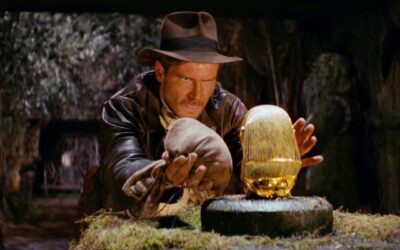
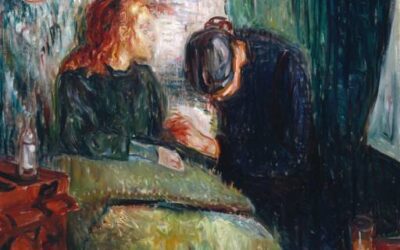
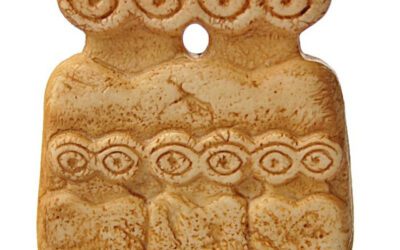

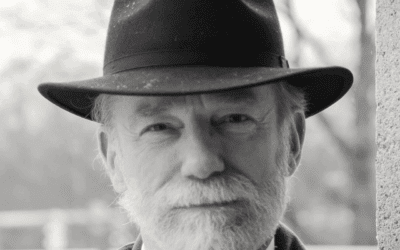





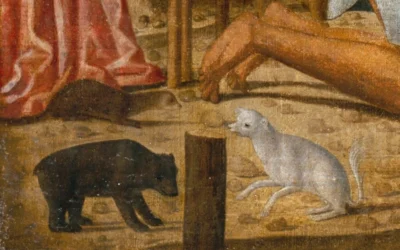



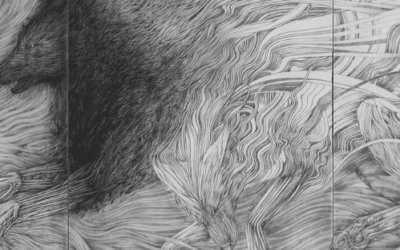
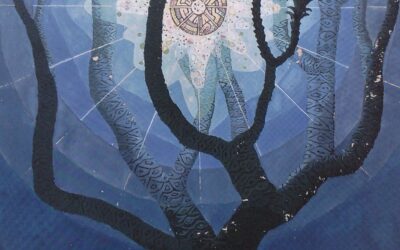
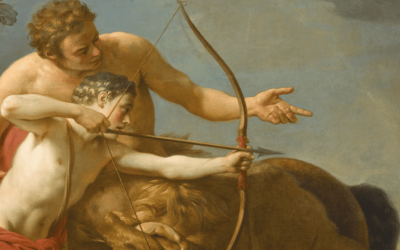
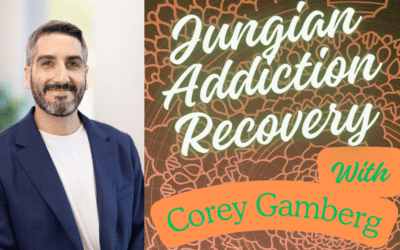

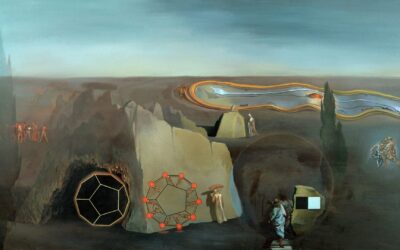
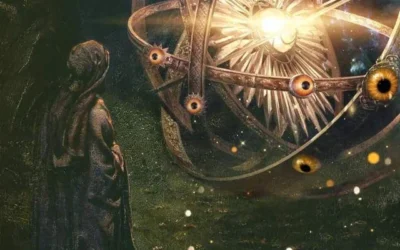




0 Comments